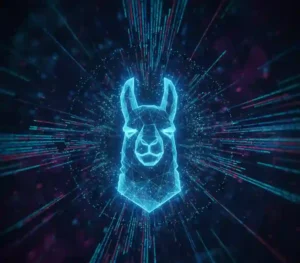Hey there, fellow code wrangler. Ever stared at a tangled mess of JavaScript callbacks and thought, “There has to be a better way to handle all this chaos?” If you’re nodding along, welcome to the world of Go, Golang to its friends. This language isn’t just another tool in the shed; it’s the Swiss Army knife for anyone serious about crafting lightning-fast, rock-solid backend systems. And if you’re here for a golang developer roadmap that cuts through the noise, you’ve landed in the right spot.
Picture this: You’re knee-deep in a project deadline, servers humming under load, and your code just… works. No drama, no late-night debugging marathons. That’s the Go magic. Born in the labs of Google back in 2009, Go has climbed the ranks to snag the 11th spot on the Tiobe Index in 2024, with its popularity surging year after year. It’s powering giants like Docker, Kubernetes, and even Uber’s ride-matching engine. Why? Because Go compiles to machine code in a blink, gobbles minimal memory, and handles concurrency like a pro, think thousands of tasks juggling without breaking a sweat.
But here’s the real kicker: Jobs in Go pay handsomely. The average Go developer pulls in around $103,000 a year in the US, with top earners hitting $200k. Not bad for a language that’s dead simple to pick up. Whether you’re a newbie dipping toes into programming or a seasoned dev eyeing a pivot, this golang developer roadmap will guide you through 10 actionable steps. We’ll hit the basics, dive into concurrency (Go’s secret sauce), build real projects, and wrap with tips from the trenches. By the end, you’ll be ready to ship code that scales.
Ready to level up? Let’s roll.
Table of Contents
Why Go Should Be Your Next Language Obsession
Before we charge into the steps, let’s talk motivation. In a sea of languages promising the moon, Go delivers on performance without the bloat. It’s statically typed for fewer runtime surprises, garbage-collected to free you from memory headaches, and baked with concurrency primitives that make parallel processing feel like a breeze.
Stats don’t lie: According to Stack Overflow’s 2023 Developer Survey, Go ranks among the most loved and wanted languages, with devs praising its simplicity and speed. Companies like Netflix use it for streaming backends, while Meta leans on Go for tools that keep their massive infrastructure humming. And get this Ethereum’s blockchain runs on Go, proving it’s battle-tested for high-stakes stuff.
The best part? Learning Go sharpens your skills across the board. Its no-nonsense syntax forces clean code, and once you’re comfy, you’ll spot inefficiencies in other languages like never before. If you’re tired of verbose setups in Java or unpredictable async in Node.js, Go’s your antidote.
Prerequisites: What You Need Before Step One
No gatekeeping here, this golang developer roadmap assumes zero prior Go knowledge, but a sprinkle of basics helps. If you’ve tinkered with any programming language (Python, Java, even bash scripting), you’re golden. Key prep:
- Command Line Comfort: Go lives in the terminal. Practice navigating directories, running commands, and editing files with something like VS Code or Vim.
- Basic Programming Concepts: Grasp variables, loops, and functions. If that’s fuzzy, spend an afternoon on a free intro like freeCodeCamp’s JavaScript basics—it’s transferable.
- A Modern Machine: Windows, macOS, or Linux with at least 4GB RAM. No fancy hardware needed; Go’s lightweight.
Pro tip: Set up a dedicated folder for your Go adventures. Call it “go-journey” or whatever fires you up. It’ll keep things organized as we build momentum.
Time estimate: 1-2 hours if you’re rusty. Now, onto the fun.
Step 1: Install Go and Get Your Environment Running
First things first, get Go on your machine. Head to the official site (go.dev/dl) and snag the latest stable version, 1.21 or higher as of late 2024. Installation’s a snap:
- Windows: Run the .msi installer and follow the wizard. It auto-sets your PATH.
- macOS: Use Homebrew (brew install go) or the .pkg file.
- Linux: Download the tarball, extract to /usr/local, and add to your ~/.profile: export PATH=$PATH:/usr/local/go/bin.
Verify with go version in your terminal. You should see something like “go version go1.21.4 darwin/arm64.” Boom, you’re in.
Next, grab an editor. VS Code with the Go extension is my go-to; it auto-completes, debugs, and even formats your code. Install it, then run go mod init myproject in a new folder to kick off your first module.
Actionable tip: Run a hello world right away. Create main.go:
package main
import "fmt"
func main() {
fmt.Println("Hello, Go world!")
}
Execute with go run main.go. Seeing that output? You’ve just crossed the starting line. This step takes 15-30 minutes, but it’s your foundation.
Step 2: Master the Basics—Your Go Programming Guide Starts Here
Now we’re cooking. Go’s syntax is minimalist, think English sentences, not hieroglyphs. This is where you build intuition, following a learn golang step by step approach.
Variables, Constants, and Data Types
Start with the building blocks. Variables hold data; declare with var name type = value or shorthand name := value (type inferred). Go’s types are straightforward: int, float64, bool, string, rune (for Unicode chars).
Constants? Use const for immutable values, like pi = 3.14159.
Example:
Tip: Go favors explicitness. No implicit conversions, cast with int(floatVar) to avoid surprises.
Control Structures: Loops and Conditionals
Go keeps it lean: One loop type (for), if/else, and switch. No while, for does it all.
for i := 0; i < 5; i++ {
if i%2 == 0 {
fmt.Println("Even:", i)
} else {
fmt.Println("Odd:", i)
}
}
Switch is turbocharged, no fallthrough by default, and it handles types beyond ints.
Practice: Write a program that sums numbers from 1-100. Time yourself, under 10 lines.
Functions and Packages
Functions are first-class: Multiple returns, variadics (…), closures. Export publics with capital letters (e.g., func Public()).
Packages organize code. Import stdlib like “fmt” or third-party with go get github.com/gin-gonic/gin.
Real-world nudge: Refactor your hello world into a function that greets by name. Run go mod tidy to clean dependencies.
This basics block? 1-2 weeks, 5-10 hours/week. Drill with 20-30 small exercises, repetition breeds muscle memory.
Step 3: Dive into Collections—Arrays, Slices, Maps, and Structs
Data wrangling time. Arrays are fixed-size (rarely used), slices are dynamic arrays, your daily driver.
fruits := []string{"apple", "banana"} // Slice
fruits = append(fruits, "cherry")
Maps: Hash tables for key-value pairs. m := make(map[string]int); m[“score”] = 95.
Structs bundle fields, like custom types.
type Person struct {
Name string
Age int
}
p := Person{Name: "Jordan", Age: 28}
Tip: Embed structs for composition over inheritance, Go’s “has-a” vibe. Build a contact list app storing 10 entries in a slice of structs. Serialize to JSON with encoding/json. This step unlocks real data handling, prepping for apps.
Step 4: Pointers and Memory—Don't Fear the Asterisk
Pointers sound scary, but in Go, they’re tame. *int points to an int; &var gets the address.
Why bother? Pass by reference for efficiency, change big data without copying.
func increment(x *int) {
*x++
}
n := 5
increment(&n) // n is now 6
Fact: Go’s garbage collector auto-cleans, so leaks are rare. But misuse pointers, and you’ll chase nil panics. Exercise: Implement a linked list with pointers. 3-5 hours here, it’s a gatekeeper skill.
Step 5: Interfaces and Error Handling—Go's Polymorphism and Resilience
Interfaces define contracts: “What,” not “how.” Duck typing at its finest.
type Shape interface {
Area() float64
}
Any type implementing Area() satisfies Shape. Powerful for mocks in tests.
Errors? Simple: Functions return error as last value. Check with if err != nil { … }.
Tip: Wrap errors with fmt.Errorf(“context: %w”, err) for chains. Build a file reader that handles IO errors gracefully. This duo makes your code flexible and bulletproof.
Step 6: Concurrency Magic—A Golang Concurrency Tutorial Essentials
Ah, the crown jewel. Go shines in parallelism. Goroutines are lightweight threads, launch with go func().
Channels pipe data between them: ch := make(chan int).
go func() {
ch <- 42
}()
val := <-ch
Patterns: Worker pools with sync.WaitGroup, mutexes for shared state.
Stats: Go’s goroutines handle 100k+ concurrent ops where threads choke. Case study: Uber migrated matching to Go, slashing latency by 50% via goroutines.
Practice: Parallelize a web scraper fetching 100 URLs. Use context for timeouts. This step? Game-changer, 1 week deep dive.
Step 7: Testing, Logging, and Debugging—Keep Your Code Honest
No solid app without tests. Go’s testing package: func TestAdd(t *testing.T) { … }. Run go test.
Benchmark with BenchmarkXxx(b *testing.B). Use testify for assertions.
Logging: Stdlib “log” is fine; zap or logrus for production JSON.
Debug: Delve (dlv) integrates with VS Code. Profile with pprof for bottlenecks.
Tip: Aim for 80% coverage. Write tests first (TDD), it’ll save your sanity. Build a calculator with full test suite.
Step 8: Web Development—Build Web Apps with Golang Like a Boss
Go’s net/http is minimalist yet mighty. Router, handler, done.
http.HandleFunc("/", func(w http.ResponseWriter, r *http.Request) {
fmt.Fprint(w, "Hello Web!")
})
http.ListenAndServe(":8080", nil)
Frameworks: Gin for speed, Echo for middleware. Connect PostgreSQL via sql or GORM ORM.
Example: CRUD API for a todo app. Deploy to Heroku in 30 mins.
Real-world: Netflix’s API gateway in Go handles billions of requests daily. Tip: Use Gorilla Mux for routes. This opens doors to full-stack gigs.
Step 9: Advanced Tools—Microservices, CLI, and Deployment
Scale up: gRPC for inter-service comms, Docker for containers. Kubernetes if you’re ops-curious.
CLI: Cobra lib, build like hugo new site myblog.
Deployment: Go binaries are single-file, go build and ship. CI/CD with GitHub Actions.
Case study: Terraform’s CLI in Go manages cloud infra for millions, proving CLI prowess.
Project: Microservice for user auth with gRPC. Containerize and deploy to AWS Lightsail.
Step 10: Projects and Portfolio Polish—From Learner to Landmarks
Theory’s great, but projects prove you. Start small:
- CLI Task Tracker: Flags, persistence in JSON.
- RESTful Blog API: Auth, DB integration.
- Chat Server: WebSockets via Gorilla, real-time fun.
Advanced: Rate limiter middleware, or blockchain explorer stub.
Tip: Host on GitHub, add READMEs with screenshots. Contribute to open-source Go repos, it’s resume gold.
Time to pro: 3-6 months consistent grinding. Track progress in a journal.
Best Practices to Stick the Landing
- Code Style: go fmt everything. Linters like golangci-lint.
- Performance: Benchmark early; avoid globals.
- Security: Validate inputs, use HTTPS.
- Community: Join r/golang, Gophers Slack. Read Effective Go.
Remember, consistency trumps intensity. Code daily, even 30 mins.
FAQs
How long does it take to complete a full golang developer roadmap as a beginner?
For most, 3-6 months at 10 hours/week. Basics fly by in weeks; concurrency and projects take longer. Track with milestones, like shipping your first API.
What's the best way to learn golang concurrency tutorial hands-on?
Start with 5-10 goroutine examples: Producer-consumer via channels. Then, refactor a serial script to parallel. Tools like go playground let you experiment live.
Can I build web apps with golang without frameworks?
Absolutely, net/http covers 80% of needs. Frameworks like Gin add routing sugar for complex apps. Prototype vanilla first to grok the plumbing.
How does this go programming guide compare to learning Python for backends?
Go’s faster and concurrent-native, ideal for services. Python’s ecosystem is vast for data/ML. If scalability’s your jam, Go wins; for quick scripts, Python.
Are there free resources to follow this learn golang step by step path?
Tons: Tour of Go (official), freeCodeCamp’s 10-hour course, Go by Example site. Pair with YouTube channels like Traversy Media for visuals.
Wrapping Up: Your Path to Go Greatness
There you have it, your no-fluff golang developer roadmap to backend domination. From install to deploying microservices, you’ve got the steps, tips, and spark to make it happen. Go isn’t just a language; it’s a mindset simple, efficient, unstoppable.
What’s your first project? Drop it in the comments I’d love to hear. Now go build something awesome. You’ve got this.


















